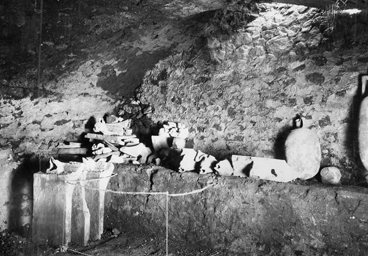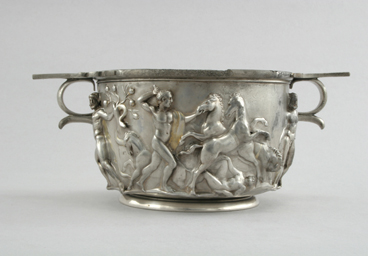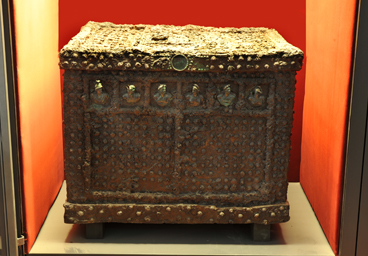Step 9 - House of Menander

A "treasure" was found in a wooden chest kept in the cellar of the House of Menander consisting of silver table vessels and toilet items, numerous pieces of jewellery for both men and women and a considerable quantity of coins.
Riches in the safe

Naples, National Archaeological Museum, Coin Cabinet. Silver denarius of C.Hosidius C.F. Geta, mint of Rome, 68 B.C. ©SSBAPES.
Bust of Diana r., draped, with bow and quiver over shoulder ; behind, GETA downwards; before III VIR
Boar r., wounded by spear and attacked by hound; in exergue, C.HOSIDI
Inv. 1455504/20; g 2,95; mm 17. RRC n.407/2
Comment
This large property, which takes its name from a fresco depicting the dramatist Menandro, most likely dates back to the Late Republican era, to the family of the Poppaei, as suggested by the seal with the name of Q. Poppaeus Erosfound in the procurators quarters.
The original core of the house underwent various transformations over four centuries. The first building in the southern part of the insula, had a regular plan built around the atrium. The adjacent house was annexed and, in the back section, the colonnade was extended on all sides to create a house with an aristocratic set-up featuring a double atrium and peristyle.
Following this, with the purchase of some small adjacent properties, further changes were made: a bath area with an independent entrance, a farm area with the stable, rooms for servants and the procurators quarters, in addition to a small independent house with a Tuscan atrium, were built. After the earthquake of 62 AD an upper floor was built with an independent entrance and further renovation work was still underway at the time of the eruption.
Lots of finds were unearthed during the various stages of the excavation of the complex which took place between 1926 and 1932 under the guidance of Amedeo Maiuri. The coins discovered in different parts of the house were extremely interesting, the most significant and famous being the "treasure" kept in the cellar in a wooden chest containing the rich silver service (108 pieces), made up of drinking vessels (argentum potorium), tableware (argentum escarium) toilet items (argentum balneare), many prized pieces of jewellery for both men and women placed in a small wooden box with bone inserts and a hoard of coins (13 gold and 33 silver) amounting to a total value of 1432 sestertii.
In other areas of the house the skeletons of some victims were found, mainly adults, perhaps the servants who lived in the farm area who were trying to reach the upper floor to escape via the roof. Beside these skeletons four hoards of just a few coins were found, their modest peculium. However, another find of particular interest is a hoard made up of two gold and ninety silver coins (equivalent to 560 sestertii), perhaps kept in a leather bag, found in a cubicle of the servants quarter next to a body of an adult and a young girl; the discovery in the area of a bronze seal with the name of Q. Poppeo Erote suggests that the hoard belonged to the procurator, the administrator of the household farm, and that he needed them to meet the costs of running the house and for the renovation works in progress.
Read more
In many Pompeian houses, almost always in the atrium, the tablinum or the peristyle, coin hoards of different values were discovered, kept in arcae (strongboxes) of wood and bronze, in wardrobes, in money banks or terracotta jars.
However, in the houses belonging to the highest class, recognizable by their size, layout and decoration, significant quantities of money were not found, as we might expect.
This is due to both the missing and irregular documentation of the most ancient excavations and because many liquid assets were saved by the owners, as demonstrated by the strongboxes found empty in some rich houses such as, for example, the House of the Faun, the House of the Vettii or the House of the Ephebe.
Instead, the large house named of Menander was uninhabited at the time of the eruption as renovation work was underway; therefore the owner, belonging to the powerful Poppaei family, had placed the family treasure in the cellar closed in a chest, and had entrusted the procurator, the administrator of the household farm living in the rustic area, the task of managing the house and overseeing the work.
Site location
Regio I Ins. 10 nr. 4
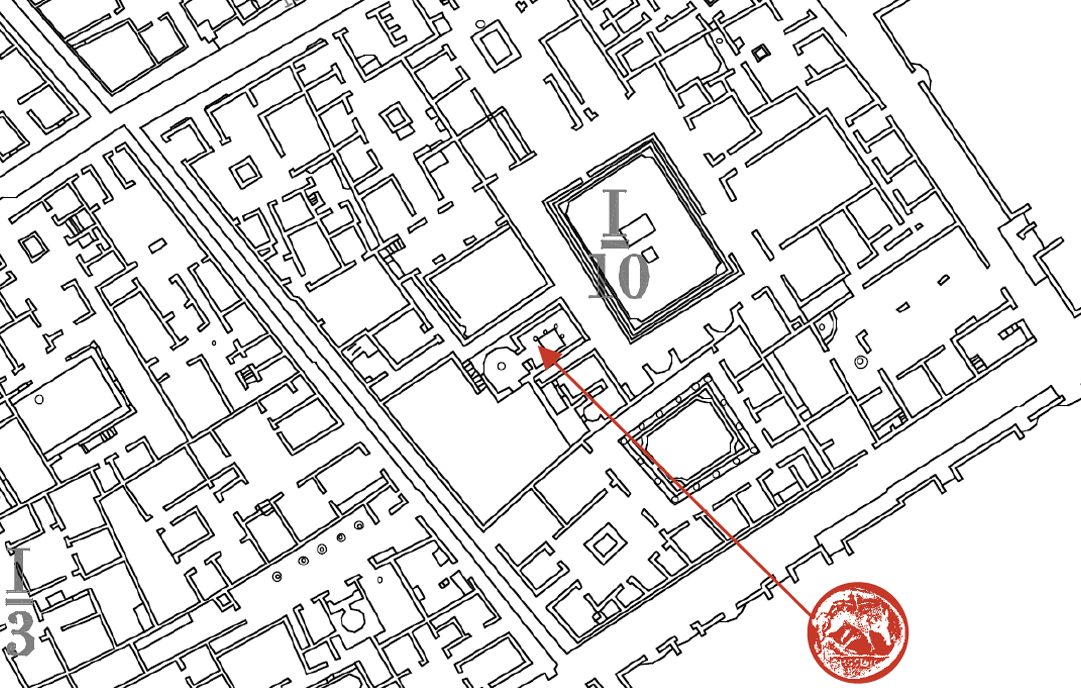
Visibility
- House of Menanderaccessible
- Cellarsnot accessible
- CoinsNAMN *
* National Archaeological Museum of Naples
Related Content
-
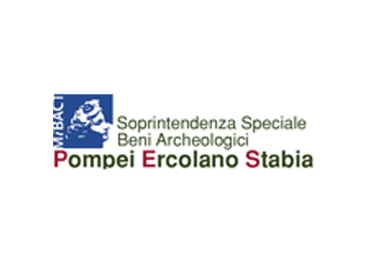
Special Superintendence for the Archaeological Heritage of Pompeii, Herculaneum and Stabiae official site
-
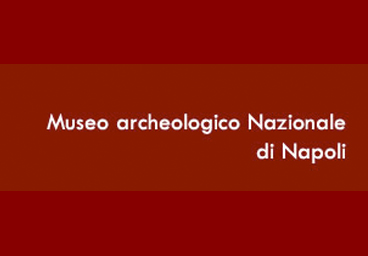
Naples National Archaeological Museum official site
-
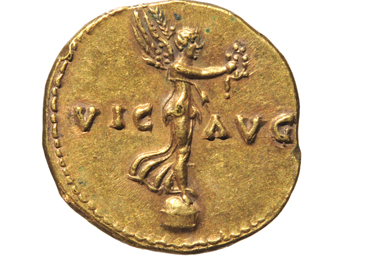
Italian Numismatic Portal, Virtual showcases of the Archaeological Museum of Naples Coin and Medal Collection
-
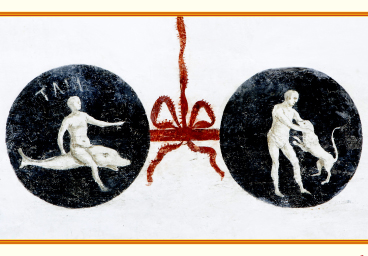
Italian Numismatic Portal, Notiziario n. 1-2013. Archaeological Museum of Naples Coin and Medal Collection
-
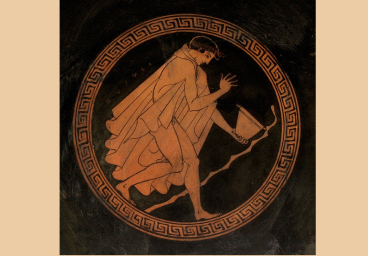
Italian Numismatic Portal, Notiziario n. 2-2013. Archaeological Museum of Naples Coin and Medal Collection
-
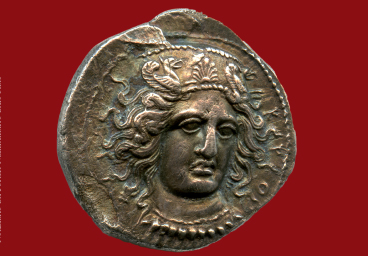
Italian Numismatic Portal, Notiziario n. 5-2014. Superintendence for the Archaeological Heritage of Naples, Archaeological Museum of Naples Coin and Medal Collection



